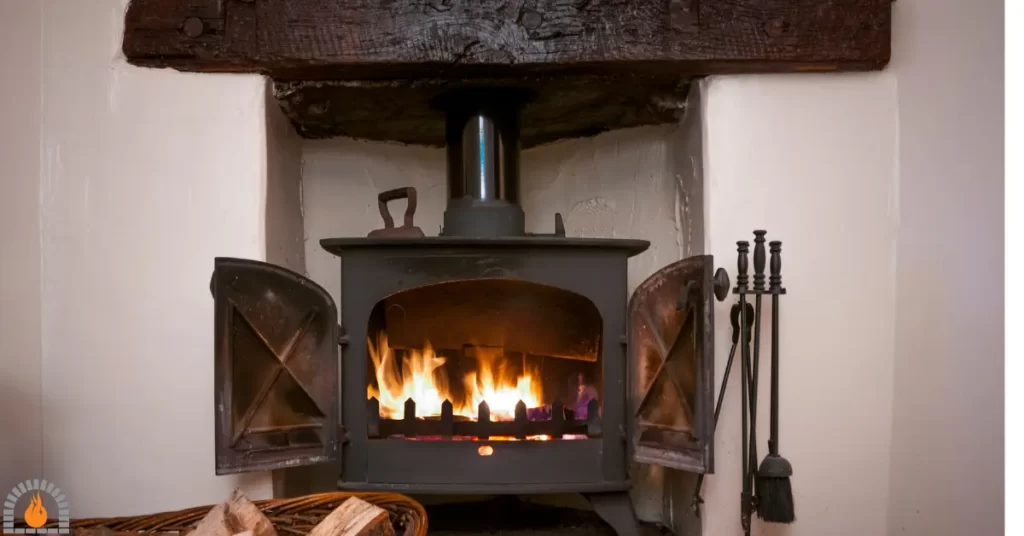Wood stoves are a popular and eco-friendly choice when it comes to heating your home. They provide warmth and comfort and add a charming aesthetic to any space. However, proper venting is crucial to ensure your wood stove’s safe and efficient operation. So, what are wood stove venting requirements?
- Chimney Venting
- Masonry Chimney Venting
- Factory-Built Chimney Venting
- Direct Venting
This article will delve into the wood stove venting requirements, exploring the different types of venting systems, installation considerations, and key safety guidelines.
Wood Stove Venting Systems
Wood stoves require a venting system to remove the byproducts of combustion, such as smoke, gases, and particulate matter. The two main venting systems commonly used for wood stoves are chimney venting and direct venting.
Wood Stove Venting Requirements
1) Chimney Venting
Chimney venting is the traditional method used for wood stove installation. It involves connecting the stove to a masonry or factory-built chimney system.
The chimney should be constructed with suitable materials that can withstand high temperatures and provide an adequate draft.
2) Masonry Chimney Venting
Masonry chimneys are built using bricks, concrete blocks, or stone. When installing a wood stove, it is essential to ensure that the chimney is properly lined and insulated.
A stainless steel chimney liner is commonly used to enhance safety and improve draft performance.
3) Factory-Built Chimney Venting
Factory-built chimneys, prefabricated or class A chimneys, are pre-manufactured and tested to meet specific safety standards. These chimneys offer flexibility in terms of installation and are typically easier to install than masonry chimneys.
Following the manufacturer’s instructions for proper installation and maintenance is crucial.
4) Direct Venting
Direct venting is an alternative to chimney venting and is suitable for homes without an existing chimney. This venting method utilizes a sealed double-walled pipe system, which draws combustion air from outside and exhausts the byproducts of combustion outside the home.
Direct venting provides greater control over airflow and eliminates the need for a chimney.

Installation Considerations
Proper installation is key to ensuring your wood stove’s safe and efficient operation.
Here are some essential considerations:
- Maintain proper clearances between the stove and combustible materials, as specified by the manufacturer and local building codes.
- Use the correct pipe diameter and length as the stove manufacturer recommends. Improper sizing can affect draft and stove performance.
- The height of the venting system plays a crucial role in drafting and preventing downdrafts. Follow the manufacturer’s guidelines for the appropriate venting height.
- Insulate the venting system to minimize heat loss and maximize draft efficiency. Insulation also helps reduce the risk of condensation and creosote buildup.
Safety Guidelines
Ensuring the safety of your wood stove installation is of utmost importance. Consider the following safety guidelines:
- Install a CO detector near the wood stove and on every level of your home to detect any odorless and potentially deadly gas buildup.
- Schedule annual inspections and cleanings by a professional chimney sweep to remove creosote buildup and identify potential issues.
- Install fire-rated materials, such as heat shields, around the stove and on combustible surfaces to minimize the fire risk.
- Place your wood stove on a non-combustible floor covering to protect against accidental ember escape and heat transfer.

You May Also Like to Read:
FAQ
Do you need a vent for a wood burning stove?
Yes, a vent is required for a wood-burning stove to ensure proper ventilation and to safely remove combustion byproducts such as smoke, gases, and particulate matter.
Can a wood stove be direct vented?
Yes, a wood stove can be direct vented. Direct venting involves using a specialized pipe system that allows the stove to draw in combustion air from outside and exhaust the byproducts through a separate vent pipe.
Can you install a stove without a vent?
No, it is not recommended to install a stove without a vent. Without proper venting, the stove’s combustion byproducts can accumulate indoors, leading to health hazards and potential fire risks.
Does a stove vent need to go outside?
Yes, a stove vent needs to go outside. The purpose of a stove vent is to expel the combustion byproducts outdoors, preventing their accumulation inside the building.
How long can a stove vent run?
The length of a stove vent can vary depending on factors such as the type of stove, the venting system used, and local building codes. However, keeping the vent as short and straight as possible is generally recommended to ensure efficient operation.
My Final Thoughts
In conclusion, understanding and adhering to wood stove venting requirements is vital for safety and efficiency. Proper installation, choosing the right venting system, and following safety guidelines will ensure that your wood stove operates optimally, providing warmth, comfort, and peace of mind in your home. Remember, it is always recommended to consult with professionals and local authorities to ensure compliance with regulations and to guarantee a secure wood stove installation.
Affiliate Disclosure: Fireplaceadviser.com is a participant in the Amazon Services LLC Associates Program. We may earn a commission when you click on certain links on this site and purchase.

Hello!! I am Jamal Khan. I often fix my home electric heaters and gas stove problems and research the common issues in the heating units to improve my knowledge and expertise. The aim of establishing fireplaceadviser.com is to share my expertise and knowledge with my audience.











